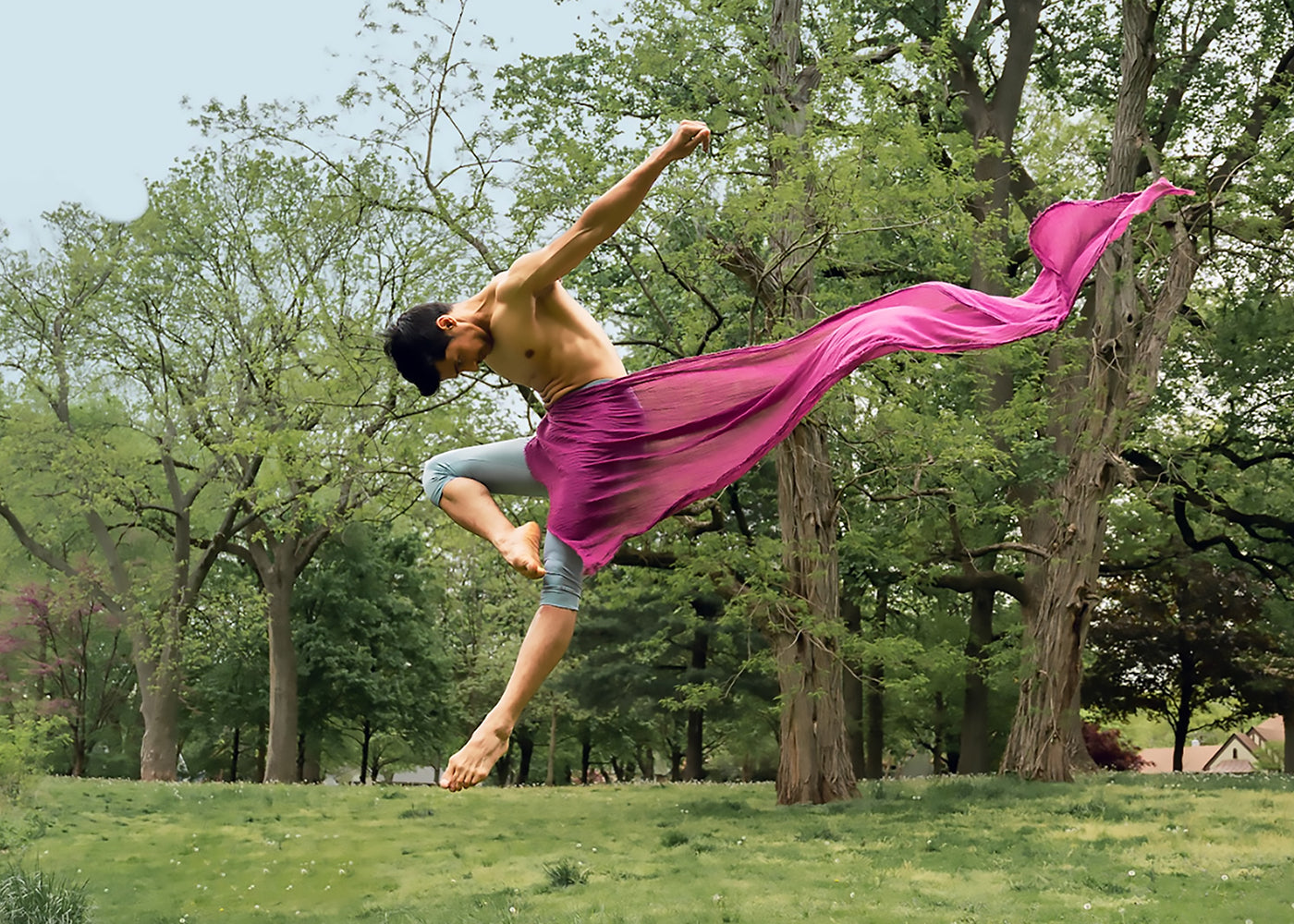Manish heads home to India to star in a dance film Yeh Ballet, a fictionalized story of himself. From there, the plotline takes us on a roller coaster ride of emotions. The glitzy, Bollywood-style movie pays well and affords our hero the ability to ease his parents’ financial burdens. He then suffers a painful injury requiring surgery and a lengthy recovery. Just as Manish re-enters the dance world, Covid strikes and Mumbai streets turn deadly silent. Undeterred, he moves in with Yehuda to help his elderly teacher weather the pandemic. The screen subdivides into the multiple boxes of a Zoom ballet class thanks to Manish assisting his guru with the technical challenges of teaching dance online.
Mid-pandemic, another one of Yehuda’s connections—Igal Perry (ballet teacher, choreographer, and founder of Peridance Center and Company in New York City)—offers Manish a scholarship. A series of scenes follows that visually archives how New York dancers (and dancers everywhere) persevered to re-open the industry: taking barre together outdoors, temperature checks at the front desk before admittance into studios, masking up for class and rehearsals. As venues are set to reopen and auditions are called, Manish is selected to perform a solo at the Kennedy Center—and we watch him take the stage and dance!
What the film is missing is an acknowledgement of the rich and thriving classical and folk Indian dance culture, which is more easily accessed than training in western dance forms. Nonetheless, Call Me Dancer is not just for dancers. The film resonates for anyone who has nurtured a dream into reality with passion, grit, and humble respect for our interdependence with others. You see, Manish and Yehuda transform each other’s lives. This small-budget film opened the 2023 Dance on Camera Festival at Lincoln Center with acclaim and just completed its New York run. It heads off to film festivals and various cities where one can catch it and be reminded that every dancer is a hero.











comments